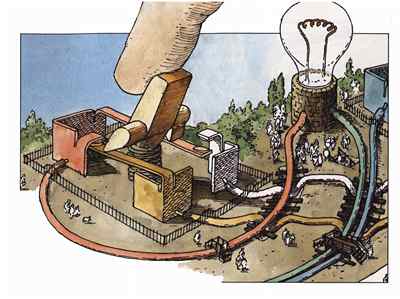Weston Middle School
Technology/Engineering Course Materials
2. Engineering Design |
| Broad Concept: Engineering design is an iterative process involving modeling and optimizing for developing technological solutions to problems within given constraints. |
|
2.1 Identify and explain the steps of the engineering design process, i.e., identify the need or problem, research the problem, develop possible solutions, select the best possible solution(s), construct a prototype, test and evaluate, communicate the solution(s), and redesign. |
|
2.2 Demonstrate methods of representing solutions to a design problem, e.g., sketches, orthographic projections, multiview drawings. |
| 2.3 Describe and explain the purpose of a given prototype. |
|
2.4 Identify appropriate materials, tools, and machines needed to construct a prototype( a functioning model) of a given engineering design. |
2.5 Explain how such design features as size, shape, weight, function, and cost limitations would affect the construction of a given prototype. |
2.6 Identify the five elements of a universal systems model: goal, inputs, processes, outputs, and feedback. |
MCAS Test Items |
"...everybody can draw, but not everybody’s going to make fine art. It’s a discipline that should be taught as writing is taught. It’s a discipline. And it isn’t about necessarily even expressing yourself. It’s just about learning to really concentrate on something. Learning to really look and ask questions, hard questions. That’s to me what drawing is about. And sometimes you make something that stands on its own ..."
"...Seeing necessitates looking and thinking. When I teach drawing, I must constantly remind my students to distinguish between what they see and what they think they see. Thinking — at least the lazy, day-to-day kind of thinking — often gets in the way of the drawing process, which requires a stubborn curiosity about why things look they way they do. Nothing can be intelligently or intelligibly recorded on a piece of paper unless true seeing occurs: first on the part of the person making the picture, and then on the part of the person reading it.
I honestly think all of us would be better off if everyone took the time to draw, if for no other reason than the better we see, the more inevitable curiosity becomes. Lack of curiosity is the first step towards visual illiteracy — and by that I mean not really seeing what is going on around us. On one level, avoidance of informed looking and thinking results merely in inappropriate architecture, endless rows of neon signs, advertising agencies, political-marketing consultants, Teenage Mutant Ninja Turtles, Barbie dolls, and Hallmark cards — in general, mediocrity. But on another, much deeper level, it threatens to turn us into isolated, insensitive, incapable, and ultimately helpless victims of a world of increasing complexity and decreasing humanity..."
- David Macaulay,
Author and artist
" Design is a Passionate Process" Professor Alexander Slocum-MIT
